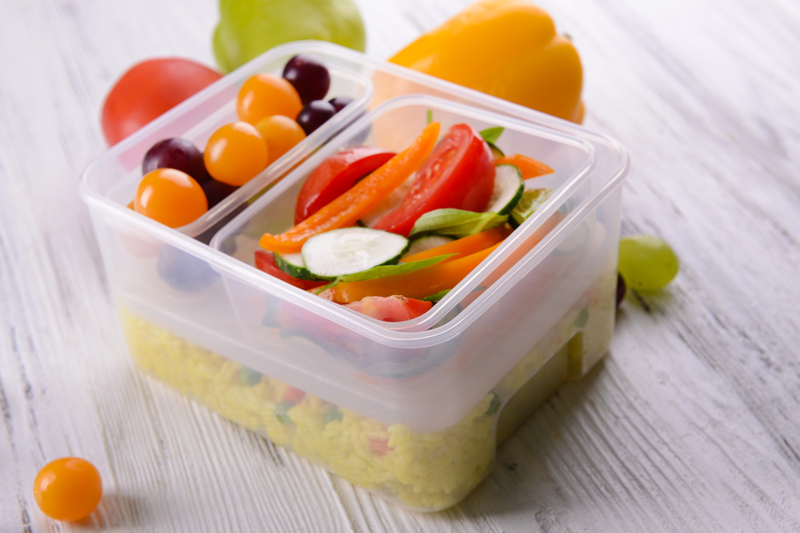Crucial Plastics to Skip for Health Enhancements
Improving your overall well-being often starts with the little things we encounter daily. One of the often-overlooked yet pervasive influences on human health is exposure to certain plastics. From food storage containers to water bottles, from toys to packaging, plastics surround our lives. But not all plastics are created equal--some pose health risks that are widely recognized and documented by scientists and health organizations worldwide. This guide will explore crucial plastics to avoid for better health, uncover why they're problematic, and provide feasible alternatives for safer living.

Understanding the Health Risks of Certain Plastics
Plastics are convenient, cheap, and durable. Yet these very characteristics often depend on chemicals that can leach into our food, beverages, or skin. Over time, repeated exposure can lead to chronic health issues. Chemicals like bisphenol A (BPA), phthalates, and styrene--found in many conventional plastics--have been linked to hormone disruption, reproductive problems, increased cancer risk, and even developmental delays in children. Thus, enhancing your health can start by avoiding problematic plastics in your daily routine.
Plastic Identification: Decoding the Symbols
Most plastic products display a resin identification code--usually a number within a triangle on the product's bottom. This code reveals the type of plastic used, letting you make informed decisions. Here's a rundown:
- #1 PET or PETE (Polyethylene Terephthalate): Common in water bottles and soda bottles.
- #2 HDPE (High-Density Polyethylene): Used in milk jugs, detergent bottles.
- #3 PVC (Polyvinyl Chloride): Found in pipes, shower curtains.
- #4 LDPE (Low-Density Polyethylene): Bread bags, some food wraps.
- #5 PP (Polypropylene): Yogurt cups, reusable containers.
- #6 PS (Polystyrene): Foam cups, takeout containers.
- #7 OTHER (Miscellaneous or Mixed Plastics): Often contains BPA.
When focusing on plastics to skip for health enhancements, pay special attention to #3, #6, and #7. These are widely considered among the worst offenders for health and have been subject to increasing regulations worldwide.
Top Problematic Plastics to Avoid for Better Health
1. Polyvinyl Chloride (PVC) - Resin Code #3
Polyvinyl chloride, commonly known as PVC or vinyl, is recognizable by its resin code #3. It is widely used in food packaging, cling wraps, children's toys, and plumbing pipes.
- Major Concerns: PVC contains phthalates--chemicals used to boost flexibility. Phthalates are known endocrine disruptors, interfering with hormonal balance, impacting reproduction, and potentially influencing childhood development.
- Health Impacts: Chronic exposure to phthalates is associated with increased risks of asthma, hormonal imbalances, and even some cancers. Heating PVC (e.g., microwaving takeout containers) makes it even more likely to leach harmful chemicals into your food.
How to Skip PVC for Improved Health: Avoid products with the number 3 recycling symbol or those labeled "vinyl." Opt for glass, stainless steel, or phthalate-free silicone for food storage and children's items, ensuring far safer daily use.
2. Polystyrene (PS) - Resin Code #6
Polystyrene, bearing the #6 symbol, is commonly found in disposable coffee cups, foam takeout containers, and some plastic cutlery.
- Major Concerns: Contains styrene, a chemical that can leach out--especially when in contact with heat or fatty foods (e.g., a hot coffee in a foam cup).
- Health Impacts: Short-term exposure can cause skin, eye, and respiratory irritation; long-term exposure is linked to nervous system issues and possible carcinogenic effects according to the World Health Organization.
How to Skip Polystyrene: Use ceramic, glass, or stainless steel mugs and containers for food and beverages. Avoid reheating foods in polystyrene containers, and choose compostable or reusable food service items when possible.
3. Polycarbonate/Other Plastics (Mixed) - Resin Code #7
The #7 category includes a wide range of plastics, many of which contain bisphenol A (BPA). Polycarbonate, in particular, was a major source of BPA in water bottles, baby bottles, and food storage containers for decades.
- Major Concerns: BPA is one of the most notorious endocrine disruptors. While many manufacturers now produce "BPA-free" products, these often still contain BPA substitutes (like BPS, BPF) that may not necessarily be safer.
- Health Impacts: BPA exposure has been linked to reproductive dysfunctions, increased risk of heart disease, diabetes, and developmental problems in children.
How to Avoid Polycarbonate/Other: Favor glass, stainless steel, or verified BPA- and BPS-free plastics for water bottles and food storage. Be cautious when buying "BPA-free" plastics and prioritize non-plastic alternatives whenever possible.
Lesser-Known Problematic Plastics
4. Plastics with Unknown Additives
Some plastics on the market do not easily fit into the above categories because of their complex or proprietary formulations. These products--often labeled "other" or without clear identification--may contain a cocktail of chemicals, including hidden endocrine disruptors or carcinogens.
- Examples include low-cost toys, novelty kitchenware, and cheap promotional water bottles.
- Avoid unmarked or no-name plastics, particularly when it comes to items in contact with food, drink, or children's mouths.
Why Skipping These Harmful Plastics is Critical
Numerous peer-reviewed studies and reports by health authorities such as the World Health Organization (WHO) and the U.S. National Institutes of Health (NIH) repeatedly document the negative health implications associated with these plastics.
- Hormone Disruption: Chemicals leaching from plastics (e.g., BPA, phthalates) interfere with the body's natural hormone production, leading to reproductive challenges, thyroid issues, and abnormal development in children.
- Cancer Risk: Exposure to compounds like styrene and certain phthalates has been flagged for increased cancer risk in both animals and humans.
- Allergies and Asthma: Children exposed to phthalates or volatile organic compounds (VOCs) from certain plastics have a higher incidence of respiratory issues.
- Neurological Impact: Chronic contact with problematic plastics may affect cognitive development and contribute to neurodegenerative disorders.
Healthier Alternatives: What to Choose Instead?
Implementing health-enhancing choices means switching from high-risk plastics to safer, durable, eco-friendly materials. Here are some top recommendations:
- Glass: Non-porous, dishwasher safe, and entirely free from harmful chemicals. Perfect for storing food and drink.
- Stainless Steel: Long-lasting, rust-proof, and does not leach any risky chemicals. Widely used for water bottles, lunch boxes, and cookware.
- Certain Tritan(TM) Plastics: Marketed as BPA-free and food-safe, but always research the manufacturer for safety data.
- Food-Grade Silicone: Inert, flexible, and suitable for baking or storage. Ensure the silicone is certified food-safe to avoid unwanted additives.
- Ceramics and Bamboo: Excellent for dinnerware and utensils without plastic-related drawbacks.
Adopting these options helps minimize routine exposure to the most hazardous plastics. This simple lifestyle change can have significant long-term health benefits, especially for babies, pregnant women, and anyone with chronic health concerns.
Smart Tips for Reducing Harmful Plastic Exposure
- Check Resin Codes: Always inspect the recycling number. Avoid #3 (PVC), #6 (Polystyrene), and #7 (Other) whenever possible.
- Avoid Heating Plastics: Never microwave food in plastic containers unless explicitly labeled microwave-safe, and even then, face exposure with skepticism.
- Avoid Scratched or Cloudy Plastic: Damaged plastic is likelier to leach harmful chemicals.
- Favor Fresh or Frozen Foods: Pre-packaged and processed foods are often stored in or sold with problematic plastics.
- Invest in Reusables: Switch to glass jars, stainless steel bottles, and cloth shopping bags to replace common single-use plastics.
- Mind Baby Products: Babies and young children are most vulnerable to chemical exposure. Always choose glass bottles, silicone nipples, and phthalate-free toys.
- Be Cautious with "BPA-Free" Plastics: Some use replacement chemicals (like BPS, BPF), which may have similar health risks.
Summary Table: Plastics to Avoid and Their Safer Replacements
| Plastic Type | Main Risks | Safer Alternatives |
|---|---|---|
| PVC (#3) | Hormone disruption, childhood development risks, cancer | Glass, Stainless Steel, Food-Grade Silicone |
| Polystyrene (#6) | Carcinogenicity, irritation, nervous system toxicity | Ceramics, Glass, Compostable Fibers |
| Polycarbonate/Other (#7) | Hormone imbalance, reproductive issues, diabetes risk | Glass, Metal, Certified BPA/BPS-free Substitutes |

Frequently Asked Questions (FAQ)
- Are all plastics unsafe? Not all plastics are equal. High-density polyethylene (#2) and polypropylene (#5) are generally considered safer for food and drink storage, but glass and stainless steel are usually best.
- What about "microwave safe" or "dishwasher safe" labels? These indicate heat resistance but don't guarantee chemical safety. It's best to avoid heating food in most plastics.
- Is recycling plastic enough? Recycling helps reduce environmental burden but doesn't eliminate health risks from exposure. Avoid problematic plastics from the start for optimal health gains.
- Are BPA-free plastics totally safe? Not always--some still contain other bisphenols (BPS, BPF), which could pose similar risks. Whenever possible, turn to non-plastic alternatives.
Towards a Healthier, Plastic-Free Lifestyle
Enhancing your health doesn't require radical change, but rather a series of smarter, more conscious decisions. Most experts agree: **skipping crucial plastics for health improvements** is one of the simplest, most effective steps you can take. By identifying and avoiding PVC (#3), polystyrene (#6), and polycarbonate (#7), and choosing safe, durable alternatives, you protect yourself and your loved ones from countless chronic risks.
Begin by checking the packaging of products you buy today. Share this knowledge, invest in superior materials, and set your family on the path to long-term wellness. Your small changes will add up to remarkable health enhancements over the years ahead.